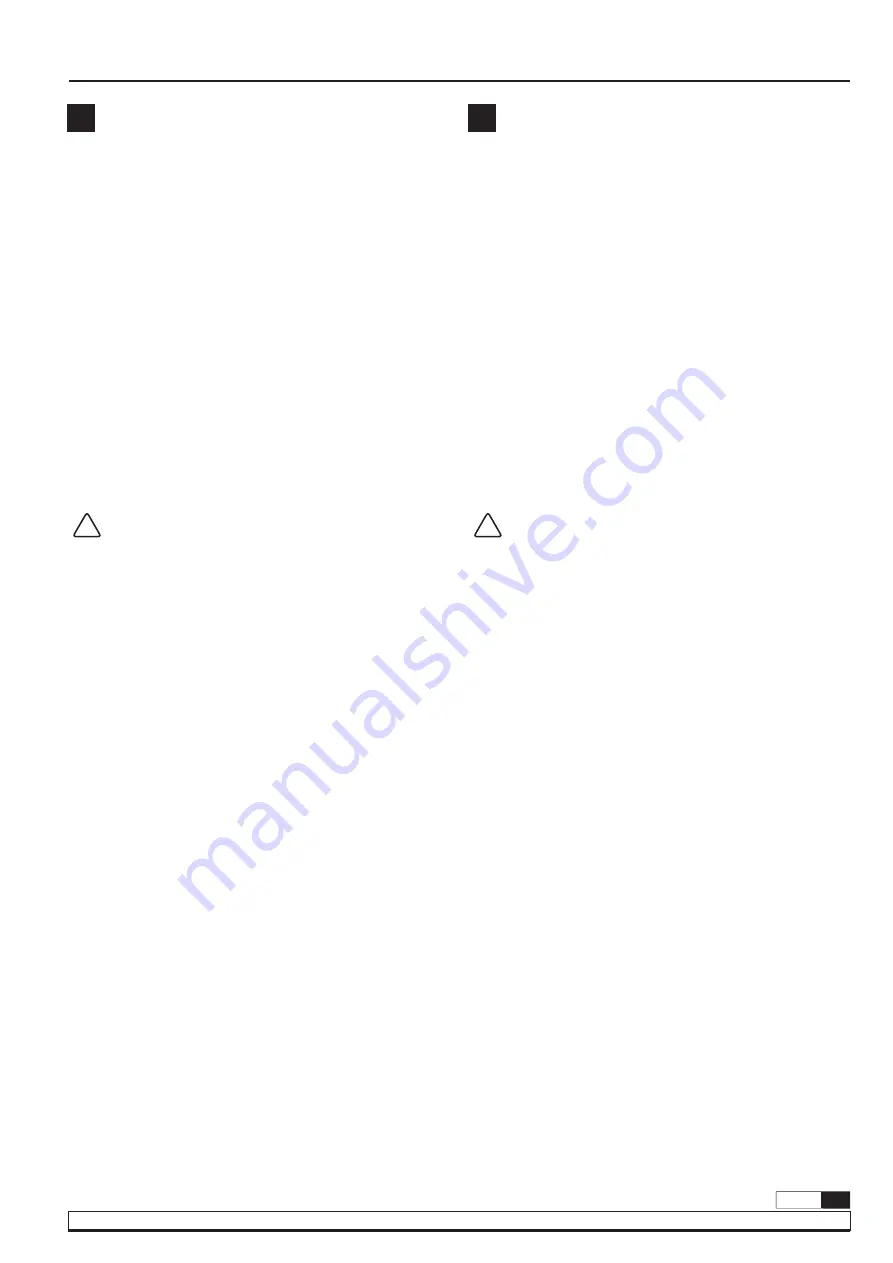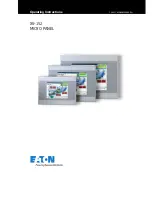
5
R. 07/21 854 823
SAMOA Industrial, S.A. · Pol. Ind. Porceyo, I-14 · Camino del Fontán, 831 · 33392 - Gijón - Spain · Tel.: +34 985 381 488 · www.samoaindustrial.com
2021_07_01-08:30
OPERATION / MODO DE EMPLEO
EN
1.
Before operating the pump/air motor it must be supported either by
the foot valve (inlet) or suspended from the air motor mounting
NEVER BOTH.
Incorrect mounting of the pump/air motor may cause poor running
and premature wear. It is recommended that the pump/air motor is
mounted on the relevant Samoa-Hydrair equipment.
2.
The guard covering the air motor to pump connection should
always be fitted before the pump is used (pag. 9).
3.
The quick disconnect on the air motor should be connected to the
air main through a 1/2” BSP ball valve and a pressure regulator. The
ball valve should be closed to stop air reaching the regulator.
4.
An optimum setting for the air regulator should now be decided upon.
5.
Ensure that the outlet and inlet of the pump is connected to the
system pipe work.
6.
Gently start to open the air ball valve so that the pump cycles slowly
(10 cycles per minute or less). Do not fully open the air ball valve as
the pump will prime more easily when cycling slowly.
7.
The pump in ready to work.
Flush the pump at the end of service or before repairing equipment to
prevent drying fluid on pump surface.
Flush with appropriate cleaning solution and lowest pressure possible.
1.
Remove the pump from pumping place and run slowly the pump to
pull out the fluid.
2.
Immerse the pump inlet in adequate cleaning solution. Set the
speed pump to minimum and pump the solution to clean the pump
and hoses.
Cuando finalice el servicio de la bomba o cuando vaya a realizar tareas
de mantenimiento será necesario realizar un lavado para evitar que el
fluido se seque sobre la superficie de la bomba.
Emplee la disolución de limpiador adecuada y la mínima presión posible.
1.
Retire la bomba del punto de bombeo y acciónela lentamente para
retirar la mayor cantidad de fluido posible.
2.
Sumerja la entrada de fluido en una solución limpiadora adecuada.
Regule la velocidad de la bomba a la mínima presión posible y
bombee el fluido hasta limpiar la bomba y las mangueras
correctamente.
Review the national and local sanitary regulations to compliance.
1.
To exhaustive cleaning pump is necessary disassemble.
See pages 10-11.
2.
Wash all parts with suitable cleaning solution. Follow the
manufacturer recommendations: concentration, time and
temperature.
3.
Rinse the part with water and dry.
4.
Check the cleanliness of components. Review the wear on seals, if
necessary replace to prevent contamination.
5.
Apply sanitizer on components.
6.
Use suitable waterproof sanitary lubricant on moving parts and seals
to assembly process. See pages 12-13.
7.
Circulate the sanitizing solution through the pump and system
before using.
Revise los reglamentos sanitarios nacionales y locales para su correcto
cumplimiento.
1.
Para realizar una limpieza exhaustiva de la bomba es necesario
desmontarla. Véase pág. 14 -15.
2.
Lave todos los componentes con una disolución de limpiador
adecuado. Siguiendo las recomendaciones del concentración,
exposición y temperatura del fabricante.
3.
Aclare todos los componentes con agua y déjelos secar.
4.
Revise la limpieza de todos los componentes así como el estado de
las juntas. Si presentan desgaste o daños será necesaria su sustitución.
5.
Aplique desinfectante sobre los componentes.
6.
Emplee lubricante sanitario resistente al agua en las partes móviles
para realizar el ensamblaje. Para ensamblaje véase pág. 16-17.
7.
Circule una solución desinfectante en la bomba y el sistema antes de
su utilización.
ES
1.
Antes de operar la bomba, esta debe de estar sustentada por la
entrada de fluido o por la placa de montaje del motor. Se recomienda
emplear los soportes Samoa para tal cometido.
2.
Las pantallas de protección del motor de aire deben de estar
instaladas antes de poner en uso el equipo.
3.
Cerrar la válvula de bola. Conectar el enchufe rápido al motor
mediante una válvula de bola ½’’ y regulador de presión a la línea
de alimentación de aire.
4.
Fijar la presión de trabajo óptima en el regulador de presión.
5.
Asegurar que la salida y entrada de fluido está
correctamente conectada.
6.
Abrir suavemente la válvula de alimentación de aire de manera que
la bomba realice 10 ciclos/min o menos. No la abra completamente
hasta que la bomba se haya cebado correctamente.
7.
La bomba está lista para operar.
WARNING!
do not expose the air motor to temperatures
higher than 50 ˚C (122 ˚F) or immersed the pump in fluids at
temperature higher than 80˚C (176 ˚F). The elastomeric seals
may be damage.
ATENCIÓN!
no exponga el motor neumático a temperaturas
superiores de 50 ˚C (122 ˚F) ni sumerja la bomba en fluidos con
temperaturas superiores a 80 ˚C (176 ˚F). Los elastómeros de
las juntas pueden degradarse prematuramente.
!
FLUSHING PROCEDURE / PROCEDIMIENTO LAVADO
CLEANING PROCEDURE / PROCEDIMIENTO DE LIMPIEZA
!






































